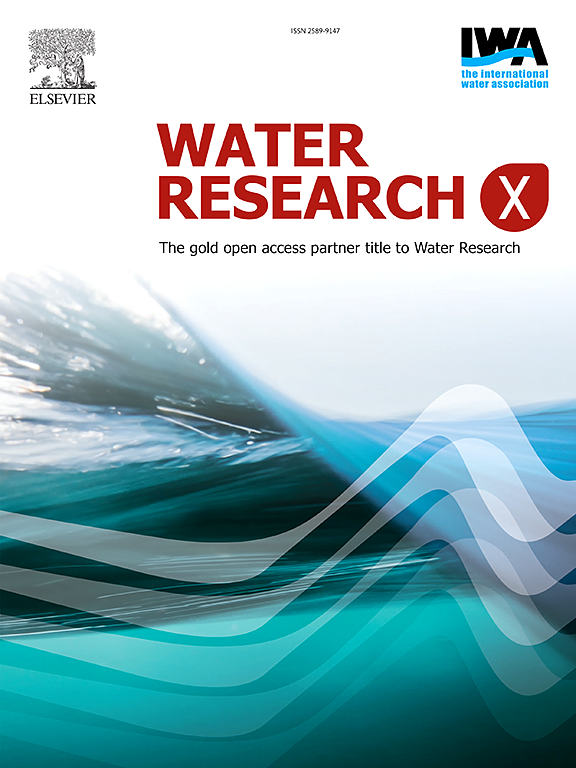Lake dissolved organic matters seasonal variations is a main driver of N2O emission: In molecular insights by using FT-ICR MS
IF 8.2
2区 环境科学与生态学
Q1 ENGINEERING, ENVIRONMENTAL
引用次数: 0
Abstract
Anthropogenic activities have introduced substantial quantities of carbon and nitrogen into aquatic system, which are hotspots for nitrous oxide emissions and play multiple roles in the global biogeochemical cycle. We characterized the seasonal variation of DOM by employing a comprehensive approach incorporating absorption spectroscopy, excitation-emission matrix fluorescence and Fourier transform ion cyclotron resonance mass spectrometry (FT–ICR MS). Results revealed that DOM seasonal variation could be the main factor driven lake N2O emission alteration. In warm seasons, lakes are predominant with recalcitrant aromatic compounds DOM released by phytoplankton, such as highly unsaturated and phenolic compounds, polyphenols., and lignin, accompanied by low N2O concentrations (0.03±0.02 μmol/L). In cold seasons, bioavailable components (Aliphatic, Sugar-like, Peptide-like) are dominated in lakes, the increased abundance of S-containing compounds and low aromaticity compounds largely influenced by anthropogenic emissions, leads to elevated N2O concentrations (1.91±0.06 μmol/L). The DOM with high bioavailable components promotes sediment N2O production (nir/nosZ (I+II)-type denitrifiers) (n = 678). Recalcitrant DOM reduced sediment nirK and nirS-type denitrifiers, and increased nosZ (I+II)-type denitrifiers, enhance the N2O reduction and led to a lower N2O emission. This study advances the understanding of the microbial mechanisms that DOM regulates N2O emissions in lakes.

湖泊溶解有机质的季节变化是N2O排放的主要驱动因素:基于FT-ICR MS的分子洞察
人类活动将大量的碳和氮引入水生系统,而水生系统是氧化亚氮排放的热点,在全球生物地球化学循环中发挥着多重作用。我们采用吸收光谱、激发发射矩阵荧光和傅里叶变换离子回旋共振质谱(FT-ICR MS)综合方法表征了DOM的季节变化。结果表明,DOM季节变化可能是驱动湖泊N2O排放变化的主要因素。在温暖季节,湖泊以浮游植物释放的顽固性芳香族化合物DOM为主,如高不饱和酚类化合物、多酚类化合物。和木质素,伴随着低浓度的N2O(0.03±0.02 μmol/L)。在寒冷季节,湖泊中生物有效成分(脂肪族、糖类、肽类)占主导地位,含s化合物和低芳香性化合物丰度的增加主要受人为排放的影响,导致N2O浓度升高(1.91±0.06 μmol/L)。具有高生物可利用成分的DOM促进沉积物N2O生成(nir/nosZ (I+II)型反硝化菌)(n = 678)。顽固性DOM减少了沉积物中的nirK和nirs型反硝化菌,增加了nosZ (I+II)型反硝化菌,增强了N2O的还原作用,降低了N2O的排放。本研究促进了对DOM调控湖泊N2O排放的微生物机制的认识。
本文章由计算机程序翻译,如有差异,请以英文原文为准。
求助全文
约1分钟内获得全文
求助全文
来源期刊

Water Research X
Environmental Science-Water Science and Technology
CiteScore
12.30
自引率
1.30%
发文量
19
期刊介绍:
Water Research X is a sister journal of Water Research, which follows a Gold Open Access model. It focuses on publishing concise, letter-style research papers, visionary perspectives and editorials, as well as mini-reviews on emerging topics. The Journal invites contributions from researchers worldwide on various aspects of the science and technology related to the human impact on the water cycle, water quality, and its global management.
 求助内容:
求助内容: 应助结果提醒方式:
应助结果提醒方式:


